8 Types of Trees in Louisiana (With Pictures)
-
Brooke Bundy
- Last updated:

Louisiana’s sub-tropical climate means hot, humid temperatures, and the trees weather hurricanes and other natural disasters. The dense, sandy soil chokes out some weaker plants, and the swampy land often gets boggy, which can cause root rot. Some common trees, such as deciduous hardwood trees, can’t tolerate such an environment.
Louisiana is home to majestic trees such as the Bald Cypress, which is often veiled with Spanish moss like a cajun queen. The state supports an ecosystem unique to the Southern United States while sharing some plants in common with the rest of the country.
The 8 Types of Trees in Louisiana
1. Bald Cypress
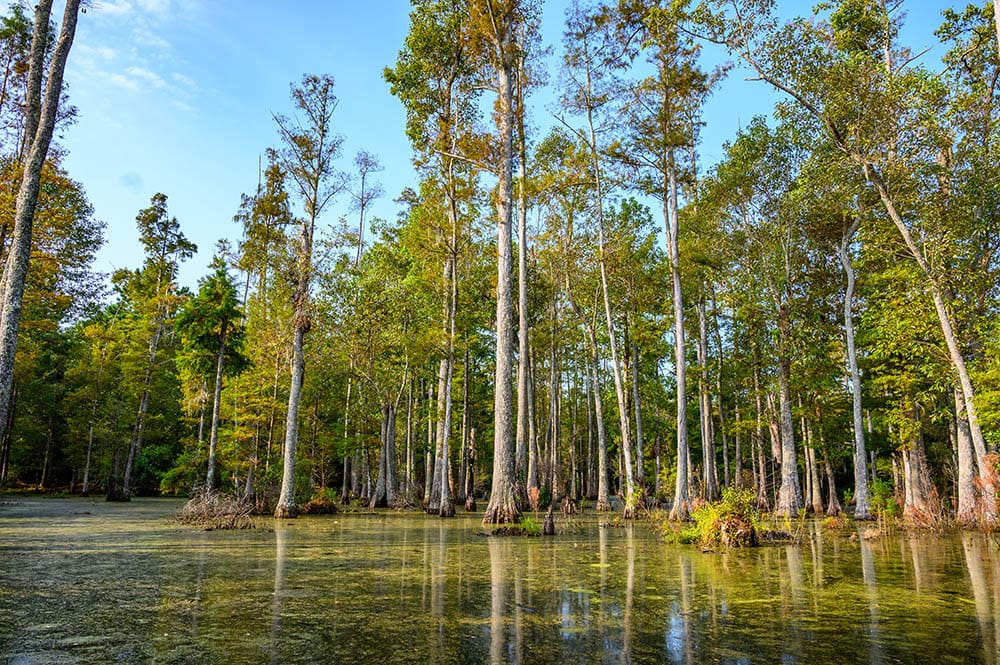
- Taxodium distichum
- Deciduous
- Coniferous
The Bald Cypress was named the state tree in 1963 because of its connotation with the bayou. Its leaves are thin, green, and feathery, resembling needles on a Christmas tree but more delicate. The notorious Cypress “knees” are scattered along the tree’s base and are often carved into sculptures by folk artists. The tree has reddish-brown bark and grows small cones on the ends of its branches. The Bald Cypress is one of the only deciduous conifers, meaning it sheds its leaves each year and grows cones instead of acorns or seeds to reproduce. Its flexible, soft wood has been used for over a hundred years for interior and exterior paneling and is durable against the weather.
2. Southern Magnolia
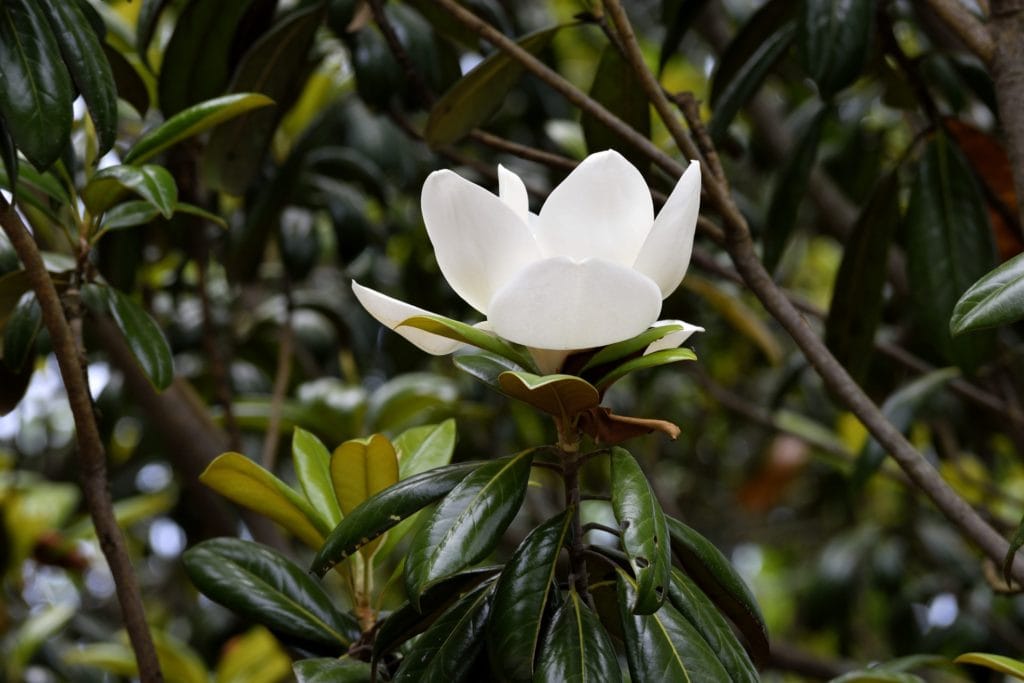
- Magnolia grandiflora
- Evergreen
- Broad-leaf
You’ll mostly find this southern belle flourishing along the flood plains, blossoming quietly in the country on ancient plantation grounds, or chosen for decoration in city parks. The Southern Magnolia is the state flower—even though it comes from a tree. Its white flowers bloom mostly from April to November. Even in the wintertime, the Magnolia retains its enormous evergreen leaves that provide subtle color with a shiny green top and dull brown bottom. Although this tree is considered a broad-leaf instead of a conifer, its seeds come from cone-like “fruit” grown in the fall. If you find a sprawling magnolia with shoots of its own, you’ve probably stumbled upon a tree that’s weathered over one hundred years of storms. It’s no wonder the magnolia has a reputation for being a tough Southern lady.
3. Crape Myrtle
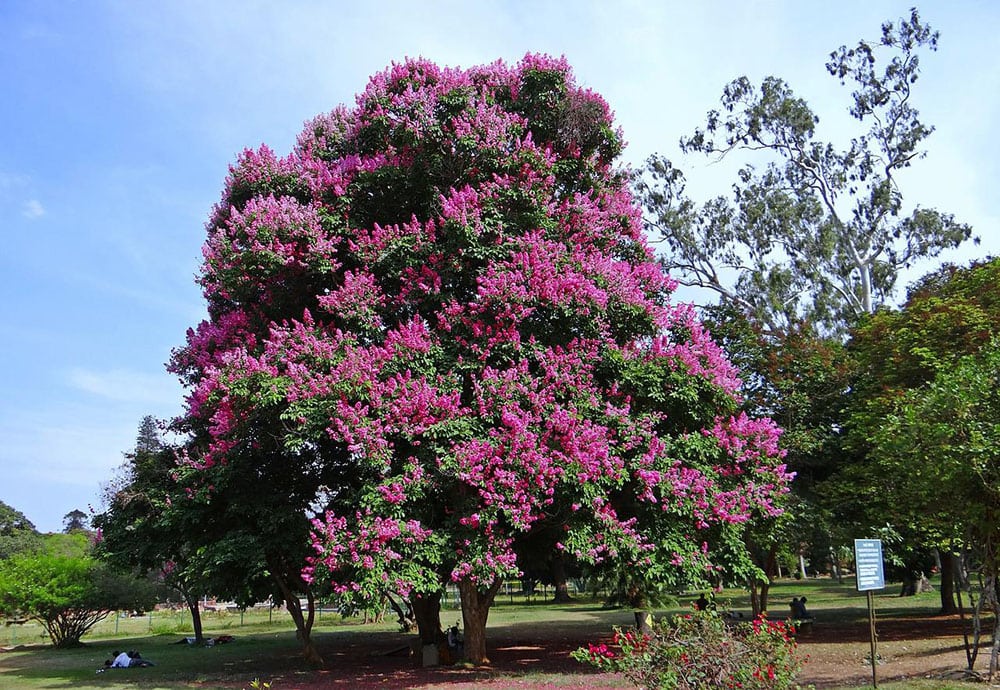
- Lythraceae
- Deciduous
- Grown from propagation or seed
Although the crape myrtle is native to China, Korea, and parts of northeast India, it’s found a favorable environment here in Louisiana. This shrubby tree thrives in hot climates and does well, whether it’s in a drought or a flood, as long as it’s in well-draining soil. Its tiny clustering flowers bloom pink, purple, white, lavender, or red from June to September. You can grow a crape myrtle from seeds or cuttings, but you’ll need to prune it every winter so it will blossom again during the next blooming season.
4. Water Oak
- Quercus nigra
- Deciduous
- Grown from acorns
We could write an entire article on the different types of Oaks that live in Louisiana, but we wanted to focus on this one because it’s local. The Water Oak is native to the Southeastern Coastal Plains and thrives in the Bayou State, although it doesn’t tend to live as long as other species such as the Live Oak.
Because Louisiana has a sub-tropical climate, some Oak trees can actually act as semi-evergreen trees, but the blue-green leaves of the Water Oak species typically turn yellow in the autumn and gradually fall during the winter. The Water Oak grows quickly, gaining two feet per year, but usually only lives around 80 years.
5. American Elm

- Ulmus americana
- Deciduous
- Grown from propagation or seed
Also known as the White Elm, you can find the American Elm anywhere in Louisiana. This tree welcomes spring with its tiny drooping clusters of red flowers with white-black stamens. It’s the first tree to bloom in the new year, although the subsequent frosts often kill the flowers and the non-edible fruit. The green, oval leaves are usually 4–6 inches long by 2 to 3 inches wide with serrated edges. Although its wood is considered weaker than some other hardwood trees, it bends well and is commonly used to build wooden crates.
6. Sugar Maple
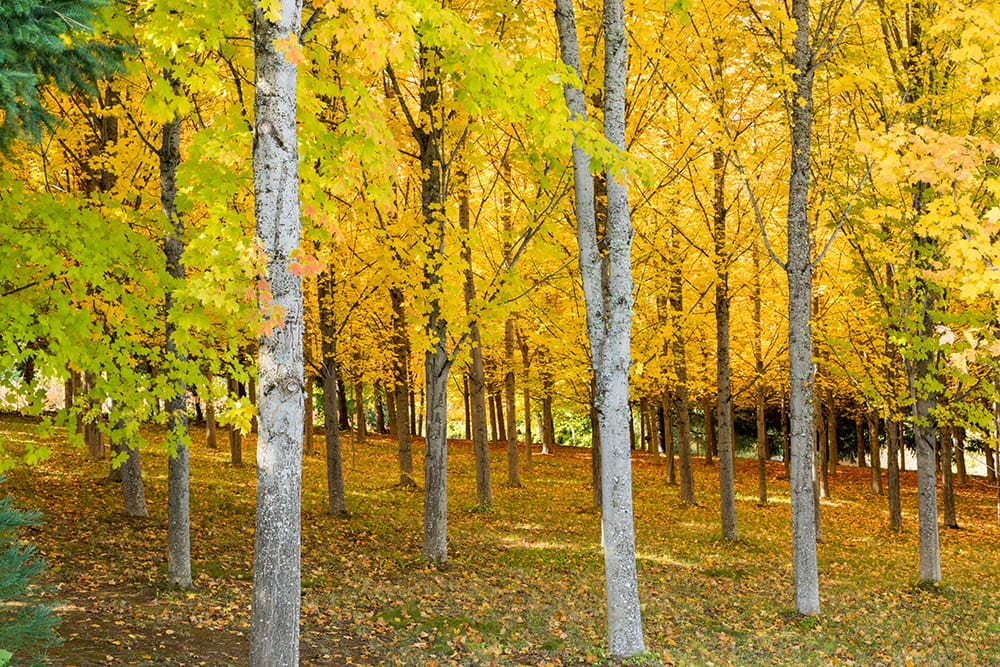
- Acer saccharophorum
- Deciduous
- Grown from propagation or seeds
This tree originated in the northern states but has made its way down to Louisiana and can be found state-wide. You can harvest maple syrup from this tree and use it for fried chicken and waffles, a breakfast staple in the south. Its distinct, five-lobed leaves change colors from dark green to an autumnal trio of red, golden, and light green right before they drop. The Sugar Maple is a medium-sized tree that typically doesn’t grow above 120 ft. and is often cultivated as part of the landscape in parks and housing complexes.
7. American Holly
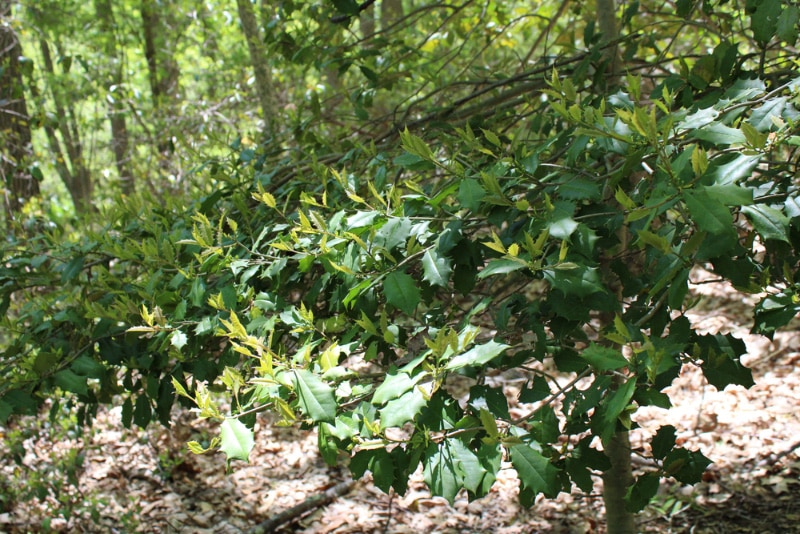
- Ilex opaca
- Evergreen
- Grown from propagation or seed
This evergreen tree has smooth, oval, green leaves and bears bright red berries during the fall and winter. Louisiana doesn’t naturally grow many traditional Christmas trees, and it was a common practice in the early 20th century to chop down a holly tree instead. However, this was discouraged in the 1960s because the Holly tree was nearly exterminated in some areas of the state. Today, you can find the American Holly in almost every parish.
8. Satsuma Mandarin

- Citrus unshiu
- Evergreen
- Grown by propagation and seeds
The short and stout Satsuma tree flourished after being brought over from its native country of Japan in the early 1900s. Louisianians quickly adopted this evergreen citrus tree into their culture, selling young trees in nearly every plant nursery, featuring its fruit in farmer’s markets in the late fall, and even including it in the Plaquemines Parish Orange Festival, which is held annually during the first weekend in December. Interestingly enough, the Satsuma tree is quarantined in the New Orleans metropolitan area, including Plaquemines Parish, because of citrus canker, a bacterial disease that weakens citrus trees. Affected fruit is safe for humans to eat but is prohibited from leaving the parish where it came from because canker spreads so easily and causes long-term harm to the citrus population. Satsumas are a sweet, tart fruit harvested in the fall between September and late November, depending on the variety.
- Related Read: 8 Types of Grass in Louisiana
Conclusion
You can easily identify most of these trees from anywhere in the state, whether you’re just visiting or wandering through a local plant nursery as you plan your garden. Louisiana trees tend to be strong and sturdy, weathering decades and even centuries of floods and droughts. Diseases like citrus canker have weakened some tree populations that were once strong, so be sure to ask an expert at the nursery for advice before you bring a new tree into your yard.
Featured Image Credit: PublicDomainPicture, Pixabay
Contents
